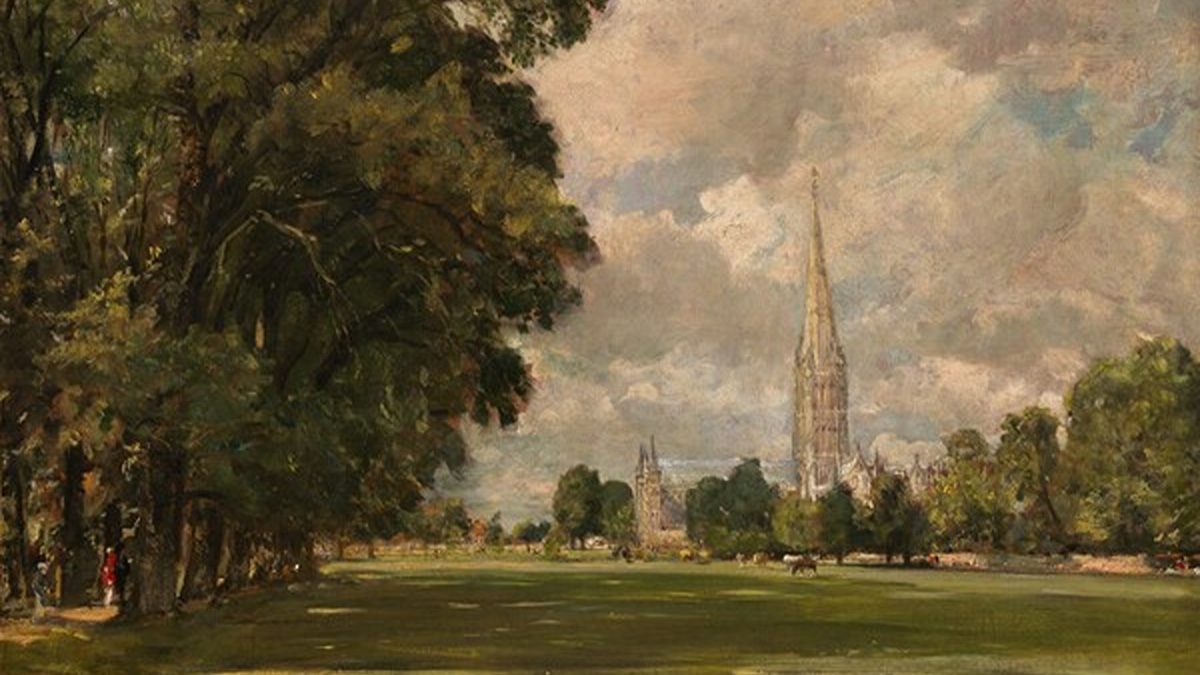Begun in 1914 on the eve of the First World War and completed in 1920, Ralph Vaughan Williams’ The Lark Ascending is a shimmering, impressionistic ode to the serene English countryside. Gently rising ever higher, the solo violin depicts the courting flight of the skylark, which glides over the green hedgerow-stitched landscape during spring and early summer. Wordsworth described the bird as the “ethereal minstrel.”
Filled with a sense of nostalgia and lament, the opening bars evoke a timeless pastoral landscape. The solo violin’s cadenza is notated without meter, and floats freely into the hazy, contented stasis of pentatonic harmony. Soon, fragments of English folksongs drift across the idyllic landscape. The solo clarinet, horn, and oboe enter into the musical conversation, each bringing its distinct persona. In the end, we are left with a sublime and meditative communion with nature. In the final moments, the solo violin makes its final celestial ascent.
Vaughan Williams‘ inspiration for The Lark Ascending came from a poem, describing the flight of the skylark, by Victorian poet, George Meredith:
‘Tis love of earth that he instils,
And ever winging up and up,
Our valley is his golden cup,
And he the wine which overflows
To lift us with him as he goes:
The woods and brooks, the sheep and kine,
He is, the hills, the human line,
The meadows green, the fallows brown,
The dreams of labour in the town;
He sings the sap, the quickened veins;
The wedding song of sun and rains
He is, the dance of children, thanks
Of sowers, shout of primrose-banks,
And eye of violets while they breathe;
Ralph Vaughan Williams completed the work with the assistance of English violinist Marie Hall. She gave the premiere with Adrian Boult at Queen’s Hall in London on June 14th, 1921. Following the performance, a critic wrote, “It showed supreme disregard for the ways of today or yesterday. It dreamed itself along”.
This recording features violinist Hugh Bean with Sir Adrian Boult leading the New Philharmonia Orchestra:
Recordings
- Vaughan Williams: The Lark Ascending, Sir Adrian Boult, Hugh Bean, New Philharmonia Orchestra Amazon
- Iona Brown with Sir Neville Marriner and the Academy of St Martin in the Fields
- James Ehnes with Andrew Manze and the Royal Liverpool Philharmonic Orchestra
- Lyn Fletcher with Sir Mark Elder and the Hallé Orchestra
- Tasmin Little with Andrew Davis and the BBC Philharmonic
Featured Image: “Salisbury Cathedral from Lower Marsh Close” (1820), John Constable


RVW’s The Lark Ascending is an exquisitely heaven-inspired work that is unique in its sublime musical expression and there are abundantly so many recording of this work as a very beautiful composition deserves. This work induces serenely deep and humble spell of meditation for me that few others works can. The very fist recording I heard and suddenly fell in love was by Barry Griffiths at the solo violin with Royal Philharmonic under Andre Previn. The modern recording I like is by Nicola Benedetti with London Philharmonic under Andrew Litton.
This sublime work deserves to be known and performed more in live concerts, especially in the current world of turmoil.